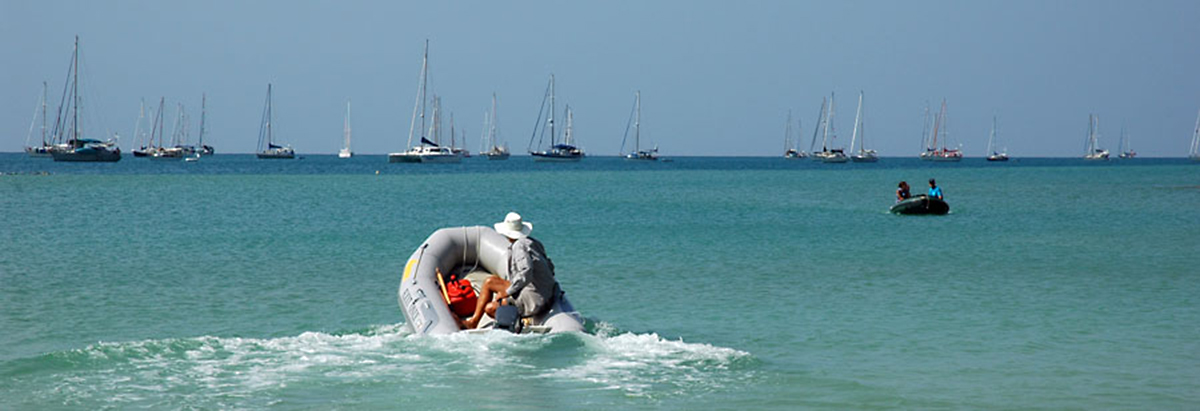

LOCATION, LOCATION, LOCATION - TSUNAMIS ARE ALL ABOUT LOCATION
If you are in the wrong location, a tsunami will kill you. If you are in the right location, a tsunami will pass by without giving you even a scratch. It's all about location.
When you visit Tsunami Land, it's worth paying attention to your location. It may save your life. Where you anchor your yacht will decide to a significant degree what happens to you during a tsunami. You can make choices that decrease the risk of damage and injury during a major tsunami event.
During a tsunami, millions of gallons of water move in and out of bays in an oscillating manner. The magnitude and proximity of the inciting earthquake will influence how much water will be displaced during the tsunami.
The shape and size of the bay, and the water depth in your anchorage will influence whether the tsunami is a major personal disaster or simply another adventure that you experience during your circumnavigation.
It's bad to be anchored in shallow water close to shore in a tsunami. When the water is drawn out of the bay, your yacht will be sitting on the seabed waiting for a humongous wave to sweep over it, pick it up and toss it on the shore, rocks, pilings, wharfs or on top of whatever happens to get in the way. Anchoring close to shore in shallow water is an invitation to disaster in a tsunami.
Being anchored in deep water over fifty feet in depth and far from shore, substantially decreases the risk of serious damage during a tsunami. You probably won't get hit by a tsunami wave in deep water. Instead, your greatest risk will be from other yachts and debris striking your hull as the tsunami water sloshes in and out of your harbor. The tsunami wave does not stand up in deep water. That thrill is reserved for yachts anchored in the shallows.
In deep water, the anchored yachts notice currents flowing by their hull in excess of ten to fifteen knots. Millions of gallons of water are flowing in and out of the bay, and yachts will swing to their anchors in the swift tsunami current. As long as your anchor holds, and as long as you swing in synchronization with adjacent yachts, you do fine. If your anchor drags, or if you swing out of synch with other yachts, you may get slammed into another anchored vessel, get sucked out to sea, or be pushed toward shore.
Swinging at anchor in tsunami currents is a great argument for cruising on a steel yacht. At least if you get slammed into another yacht, the steel vessel should survive with minimal damage.
The size and shape of the bay, the size of the mouth of the bay, and its orientation toward the inciting earthquake all make a difference in the outcome with a tsunami. Each bay has a different configuration and orientation with respect to the earthquake. Adjacent bays that are separated by only a few miles may fare significantly different during a tsunami event.
In the picture above, you can see Captain Dave heading out to Exit Only in Niharn Bay in Phuket, Thailand. Yachties were really lucky in Niharn Bay because they were prevented from anchoring in shallow water by a line of buoys. The closest to shore they can anchor is about a hundred meters from the beach, and the shallowest anchorage is about forty feet in depth.
If there ever was a good place to be anchored in a tsunami, Niharn Bay is one of the best. When the tsunami happened, the anchored yachts saw ten to fifteen knots of current flowing by their hull, but there was no wave. The wave didn't stand up until it passed the deep blue line and entered the shallow turquoise water. If the buoys had not prevented yachties from anchoring in the shallows, there would have been carnage with heavy damage to cruisers anchored in the shallow turquoise water.
Once the wave stood up in the shallows, it hit the beach with devastating results. Since the tsunami came through mid-morning, not many yachties had gone ashore, and they were largely spared from the shore side destruction. One dingy got lifted up and thrown up on the roof of a building, but the owners were not on the beach, so they did fine, although their dingy was destroyed.
We had just pulled our anchor and moved out of Niharn Bay about half an hour before the tsunami came through. We planned to move over to Achelong Bay closer to town for shopping. Achelong Bay is an extremely shallow bay, wide and long, and it fared completely differently in the tsunami.
We were a couple of miles out of Niharn Bay when we noticed that the water was swirling around Exit Only in a chaotic and extremely rapid manner. We looked down at the water and were surprised by the huge amount of current flowing past us. We had not noticed similar currents when we sailed down to Niharn Bay earlier that week.
As I looked at the outlying islands, I noticed that there were waves breaking on the islands, and I commented to the crew that it looked rough out there with the seas breaking against those islands. I was wondering if maybe we picked a bad day to make our move. We would be in for some rough sailing out there. But strangely enough, the water around us wasn't consistent with the breaking seas on the off lying islands.

At that point, I looked toward Achelong Bay, and I noticed that the bay had turned the color of milky coffee.
The picture above shows the coffee colored line at the entrance of the bay.
The dark blue line abruptly stops, and the creamy tan line goes for miles into the anchorage.
Achelong Bay is eight to twelve feet deep and encompasses many square miles of shallow water.
When the tsuanmi hit the bay, it stirred up the muddy bottom and instantly turned it the color of milky coffee.
By this time we figured out that something was wrong. Weird currents going by Exit Only, waves breaking on outlying islands, and the transformation of Achelong bay into coffee-colored water.
We turned on our VHF and listened to the chatter. The word was out. There had been a tsunami.
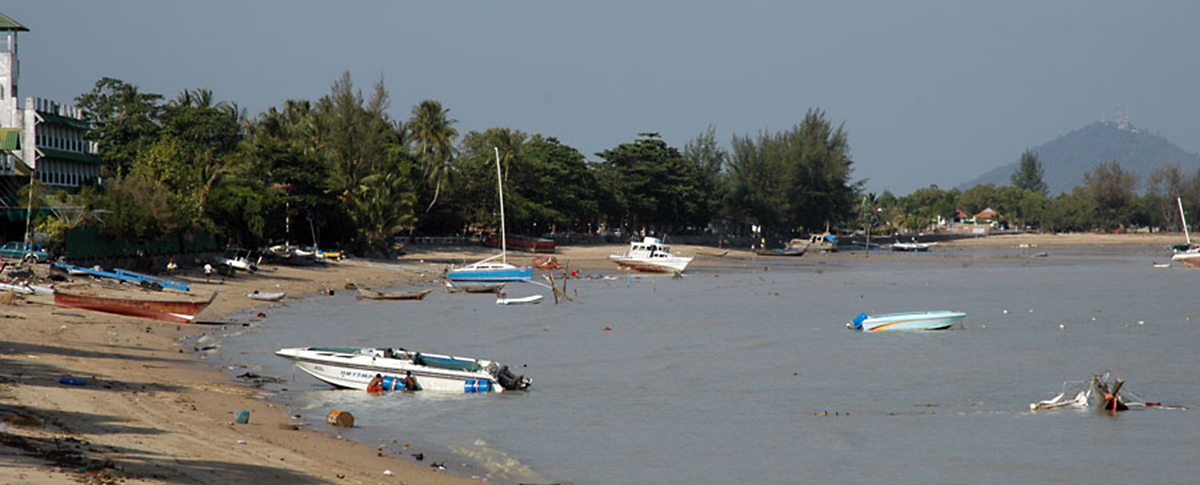
This is the beach at Achelong Bay. There were Thai long-tail boats washed up on shore and sunken in shallow water. Chaos reigned supreme with destruction everywhere you looked. Power boats and yachts alike had been driven ashore.
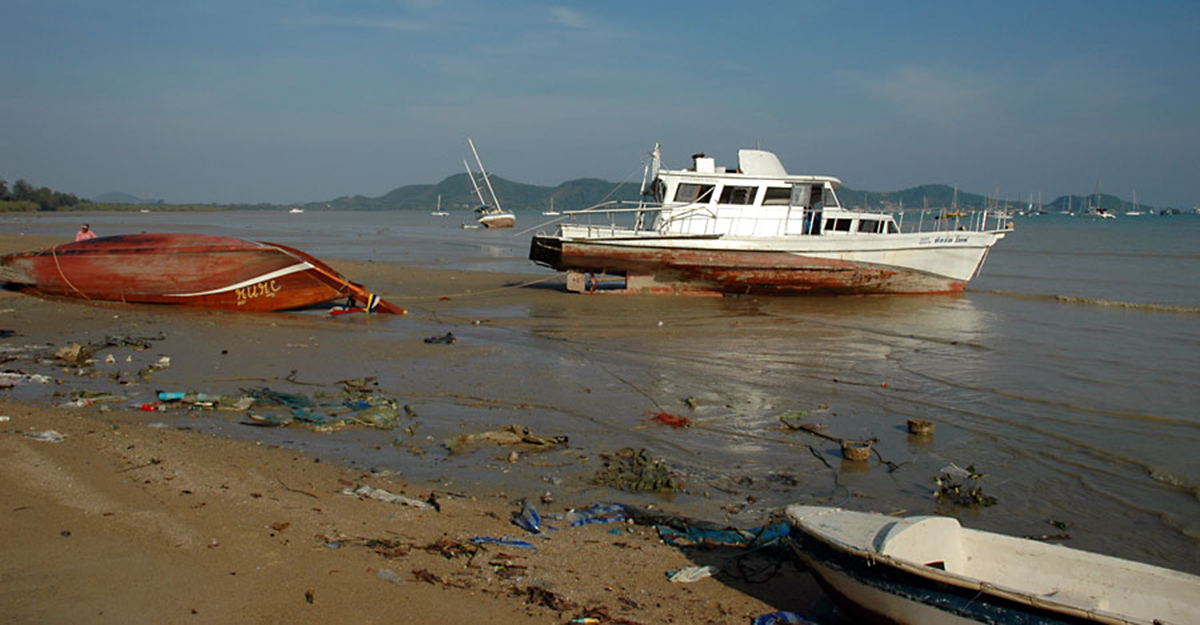
This picture shows an overturned Thai long-tail vessel, a power yacht, and a monohull washed ashore. Trash and debris litters the beach. These pictures are taken two days after the tsunami when some of the mess had already been cleaned up.
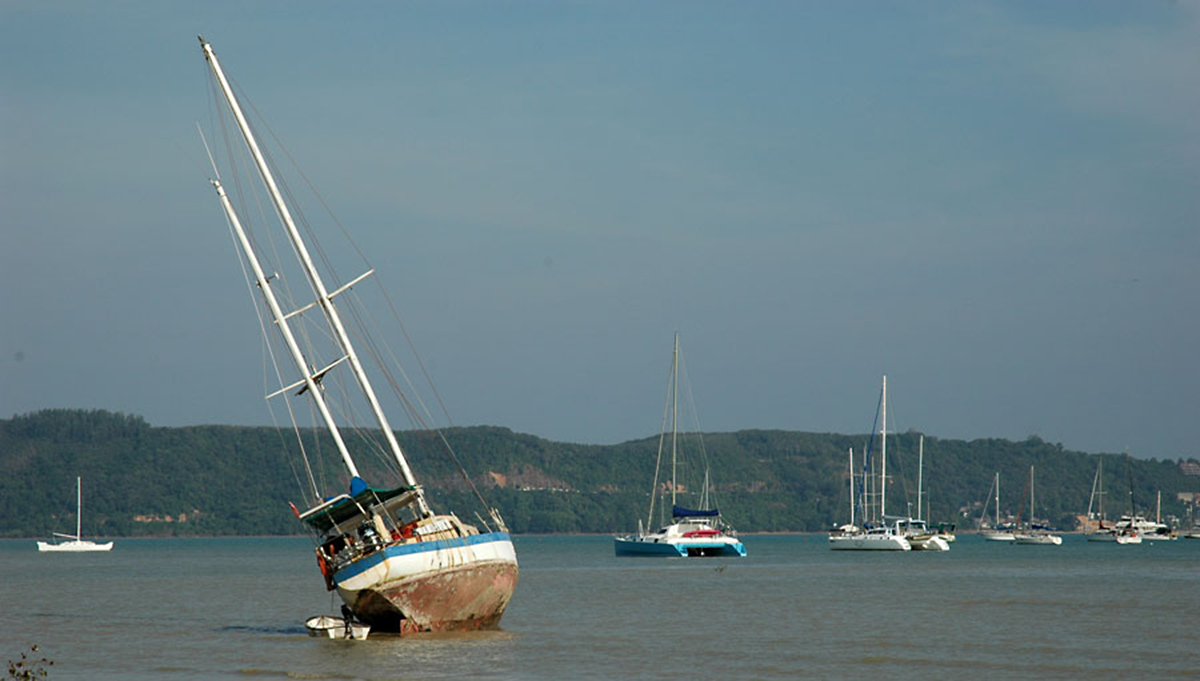
In this picture, you can see how shallow the water is in Achelong Bay. It's that shallow water that placed these yachts at so much risk.
I talked to a friend on a trawler motoring in this bay during the tsunami. He was in deep enough water that he was able to motor into and over the tsunami wave, but it was a very close call. Not all were so lucky.
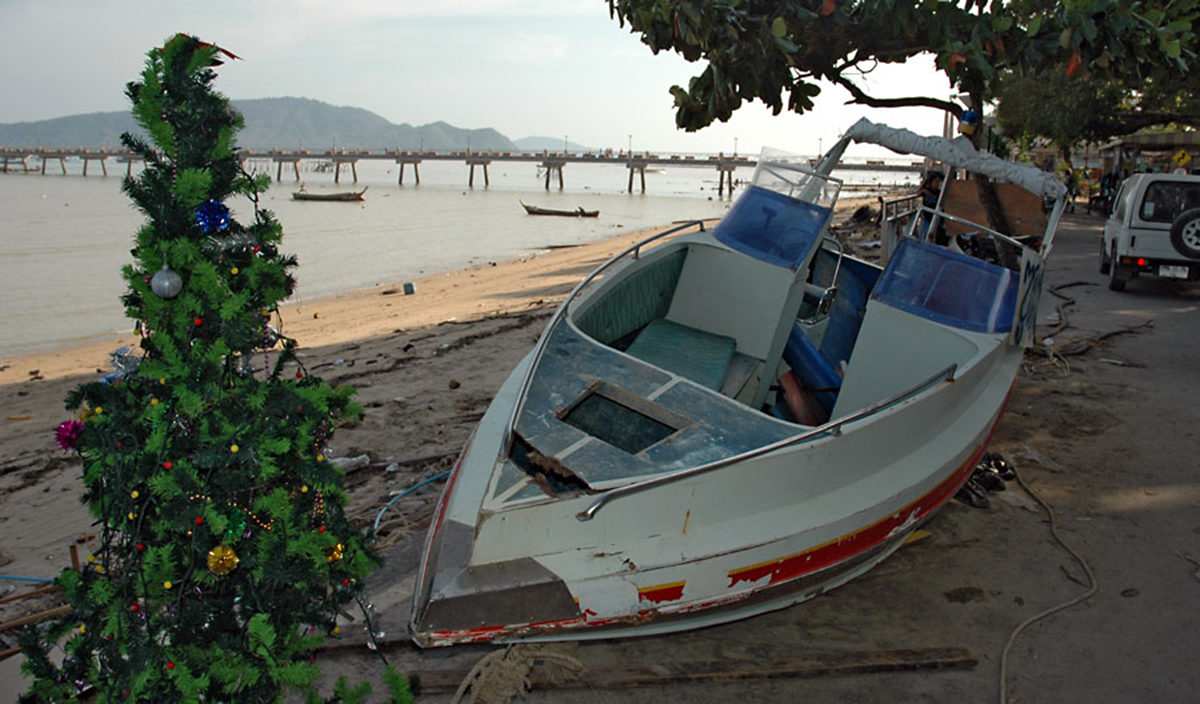
The tsunami happened the day after Christmas, and you can see a decorated Christmas tree standing next to a motorboat that washed ashore.
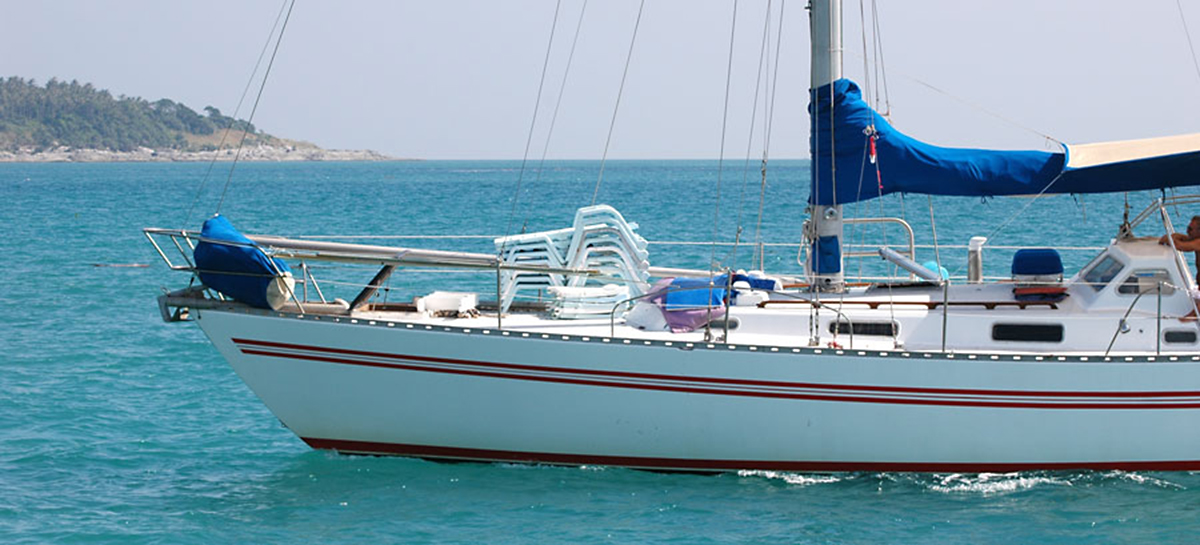
Once we discovered there had been a tsunami, we felt it was unsafe to enter the shallows of Achelong Bay, and we turned around to return to Niharn Bay.
As we got closer to Niharn Bay, there was already a debris line floating about half a mile offshore.
Many of the yachts in Niharn Bay made a hasty exit from the bay after the tsunami because they were afraid that another one might be coming.
Of the hundred or so yachts anchored in Niharn, about ten of them were already milling around outside the harbor entrance trying to figure out what to do.
Should they return to anchor or motor around in circles outside the mouth of the bay in deep water. Most of them motored for a couple of hours, picking up tsunami debris and putting it on deck so that it could be returned to hotels and resorts on shore.
This yacht carried deck chairs and cushions that they plucked out of the water.
The debris field was extensive and extended for miles. It was a hazard to navigation, and you did not want to suck up the floating debris into your engine's cooling system. Like other yachts, we motored around looking for survivors trying to avoid the debris as much as possible.
We motored for a couple of hours in the debris field, and when it appeared that there was little additional tsunami risk, we headed back in to Niharn Bay.
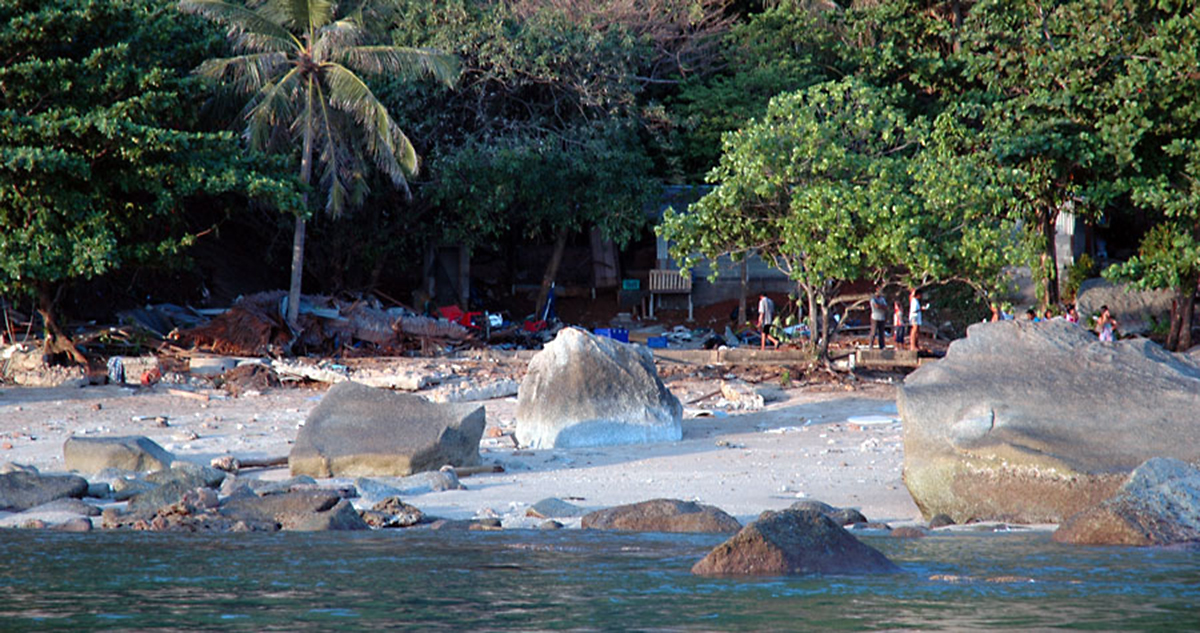
As we entered the bay, we saw that the restaurant was destroyed where we had our Christmas party a day and a half before.
The only thing left was the concrete slab seen in the picture above.
Our dingy had been pulled up on the beach just inside the rocks during that party.
Three hundred yachties attended the event. If the tsunami had happened during the party, it would have wiped out three hundred members of the cruising fleet. We were all very lucky.
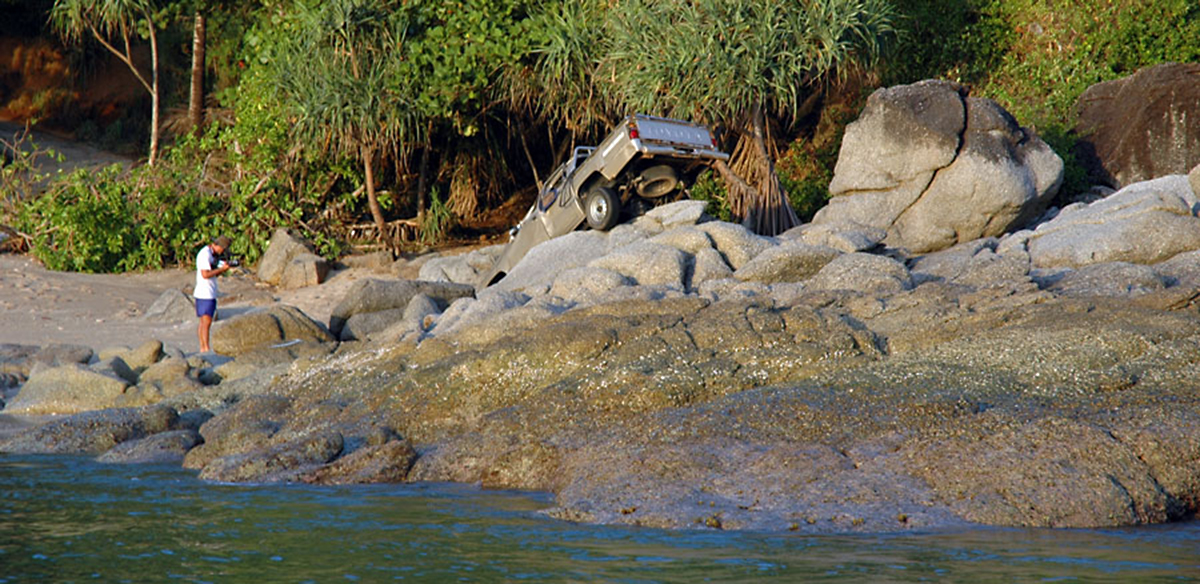
This is a pick-up truck that was parked at our Christmas party restaurant, and it was thrown up on the rocks. Many cars suffered a similar fate.
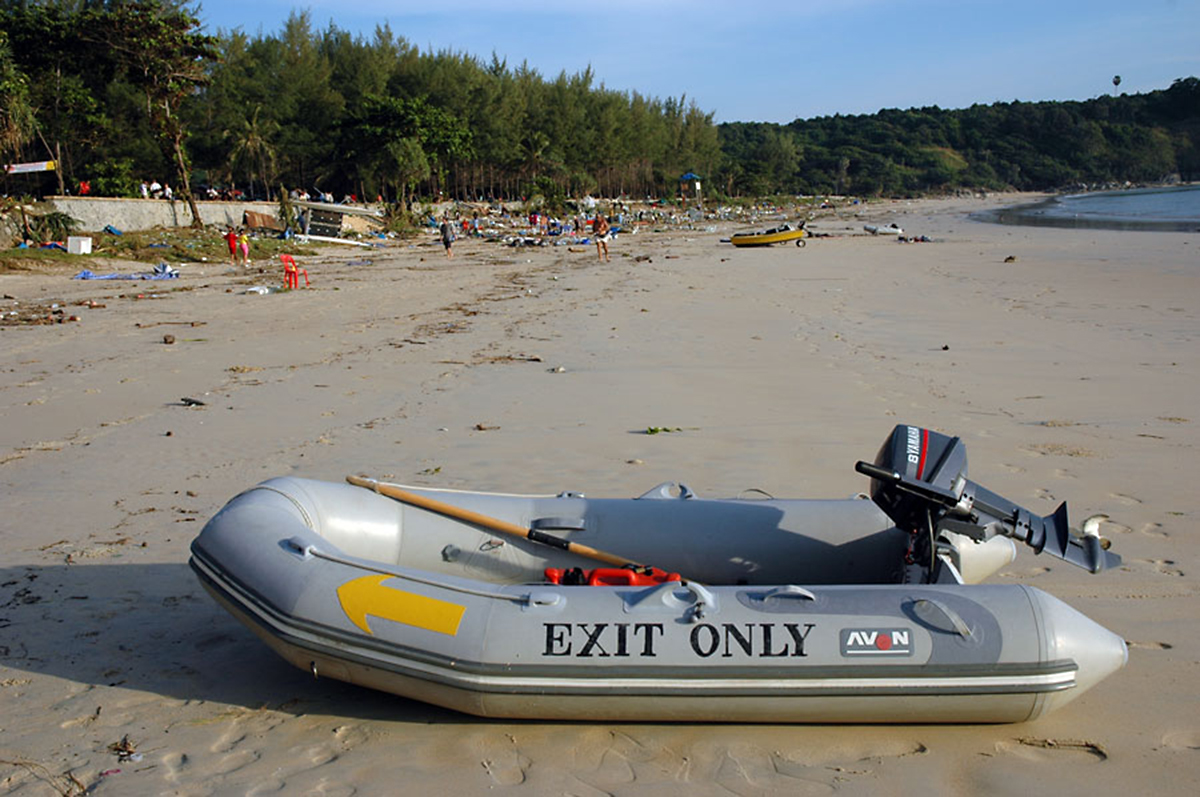
We landed our dinghy on the clearest section of the beach to avoid sharp debris that could puncture the dinghy. All around us there was destruction from the force of the tsunami wave.
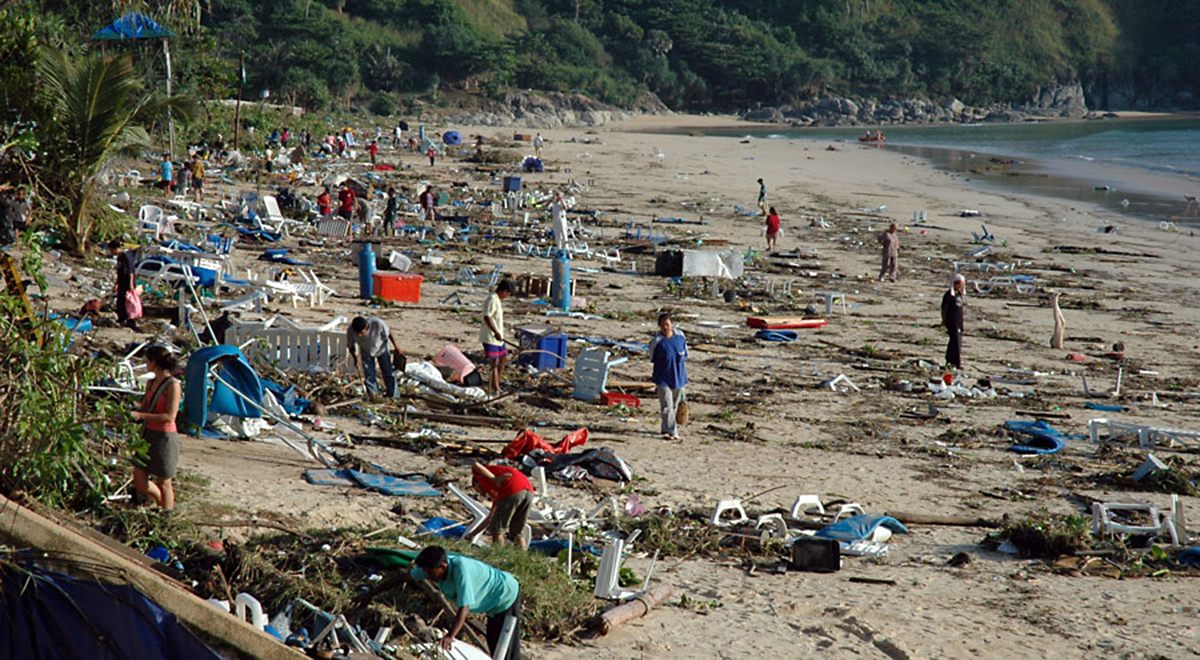
The main section of the beach was like a city dump. The junk on the beach was the same stuff that we found floating in the debris washed out to sea. Most of the items on the beach were destroyed and unusable.
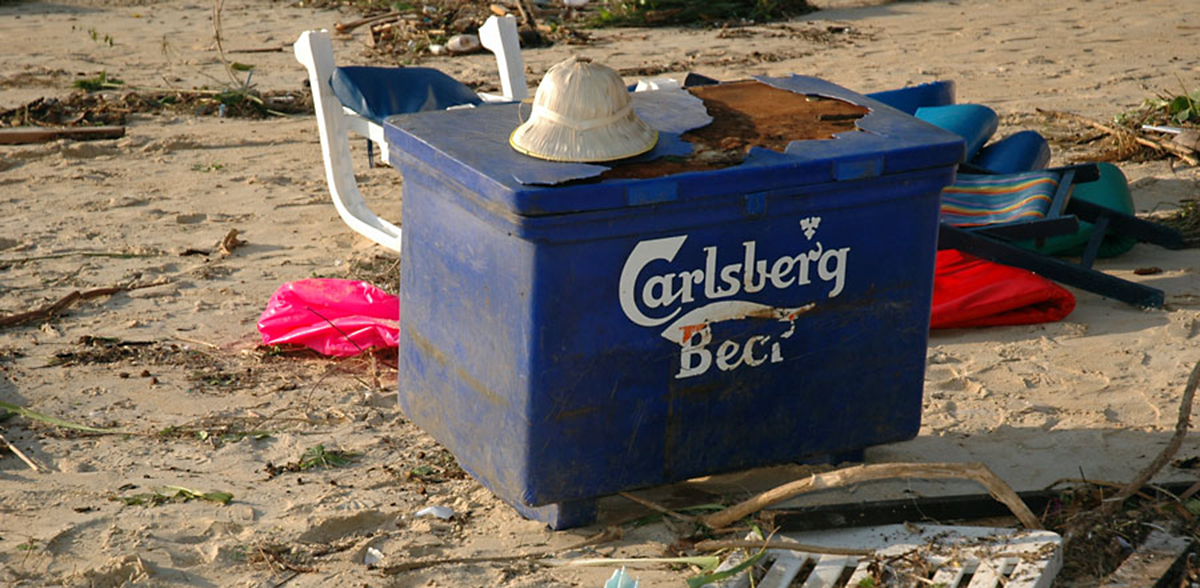
Lot's of beer coolers were strewn around the beach. I did not check inside the coolers for a drink.
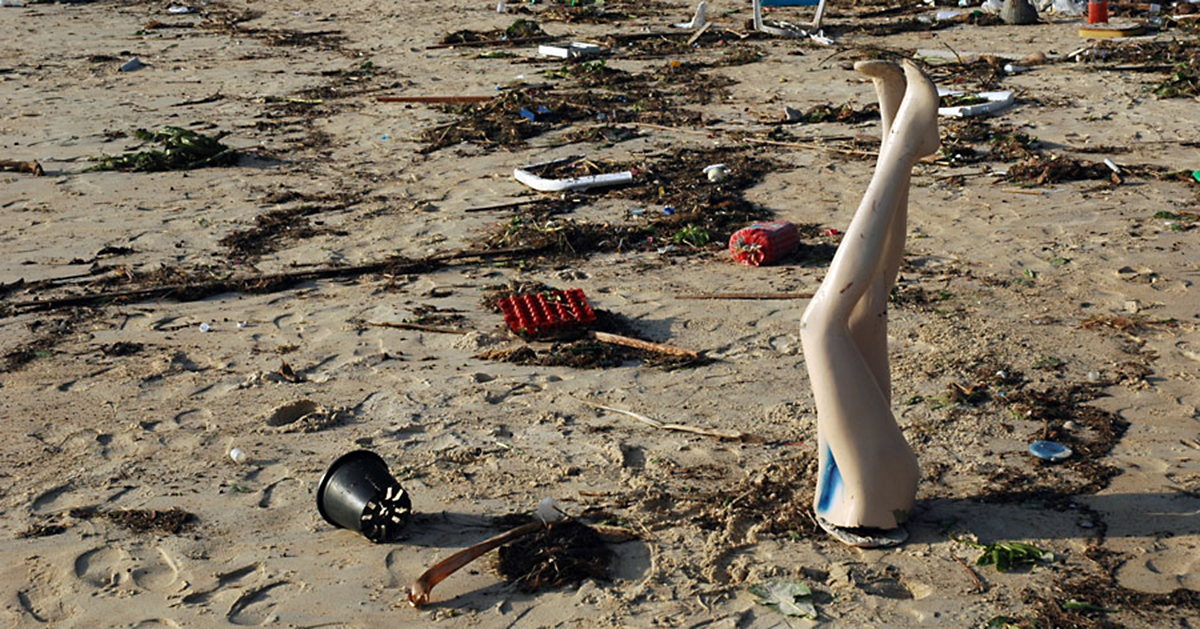
Much of the beach debris was odd, if not weird. These mannequin legs came from a shop destroyed by the tsunami.
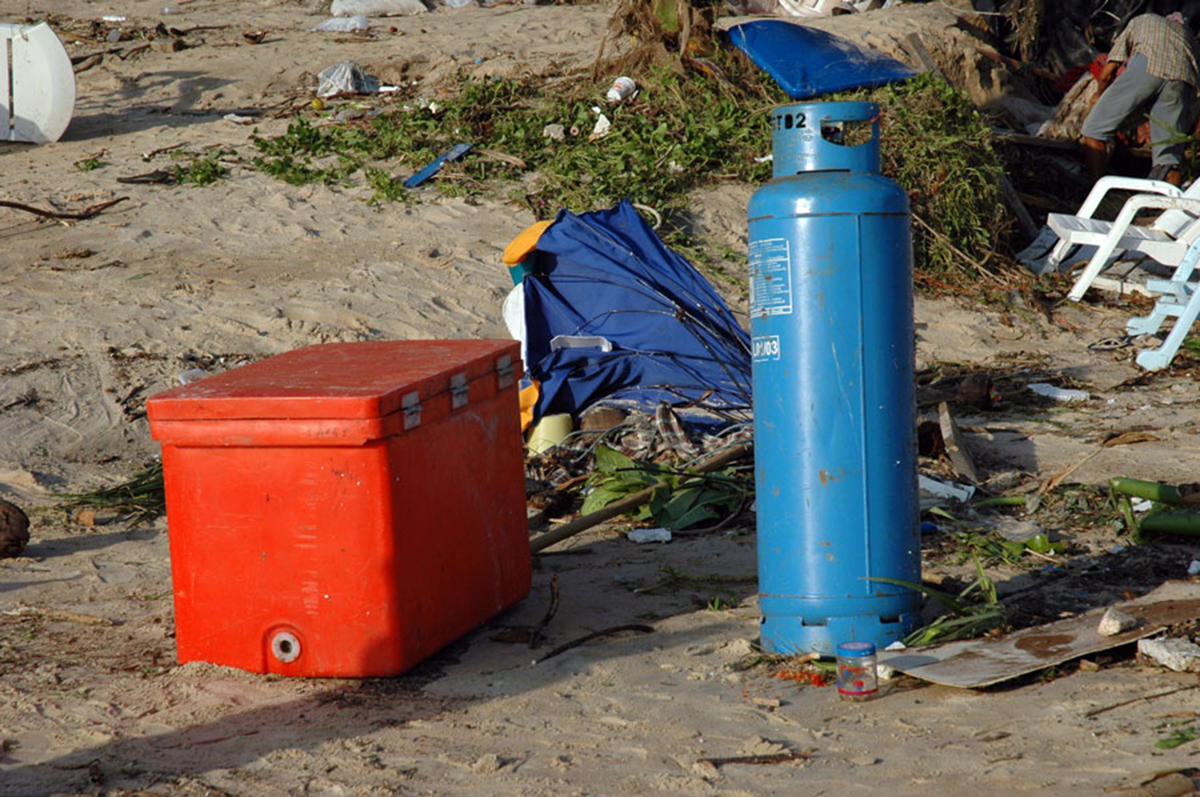
Propane tanks were strewn around the beach, and many of them washed out to sea where they posed a hazard to yachts leaving to cross the Indian Ocean.
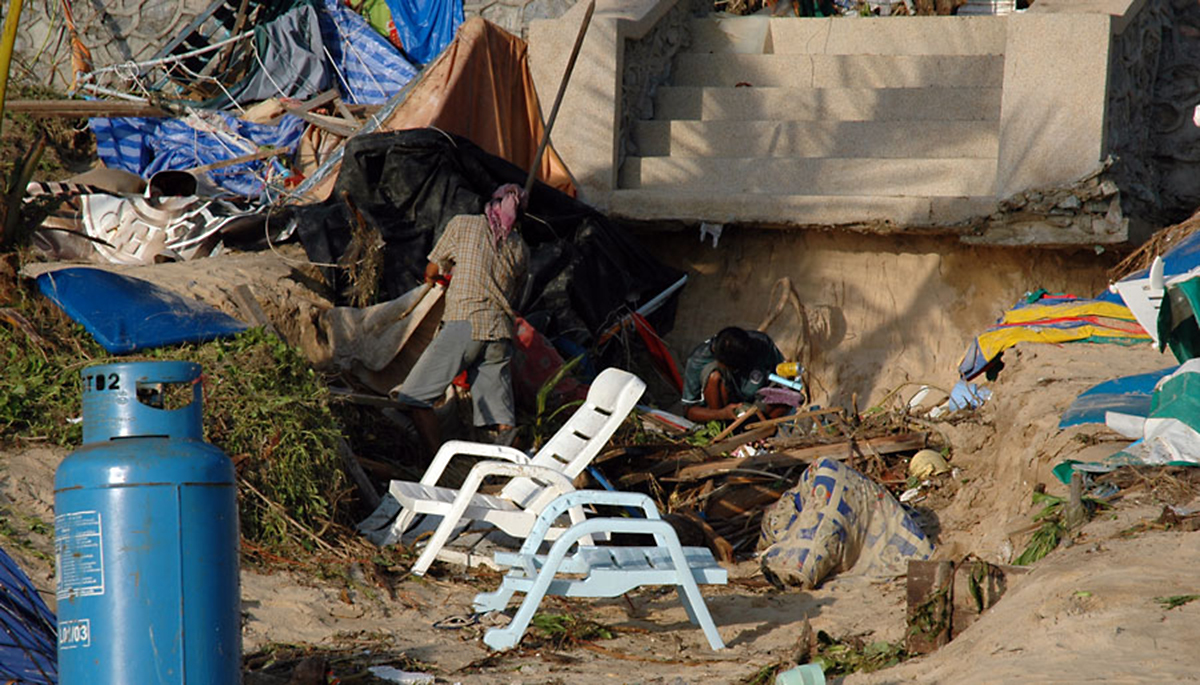
Erosion was particularly severe beneath concrete steps leading down to the beach. Retaining walls funneled water to the steps, creating a deluge that eroded the sand away from the steps.
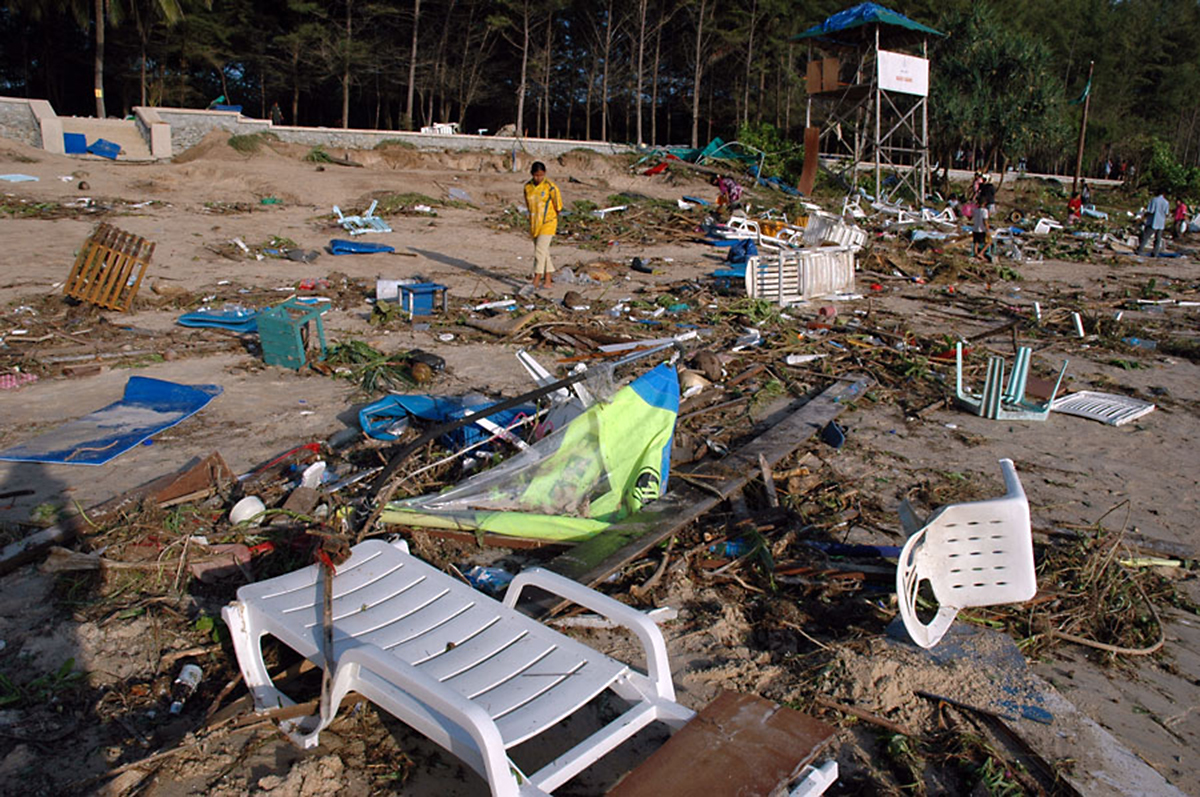
The lifeguard tower survived the tsunami's destruction. It must have been in exciting ride inside the tower.
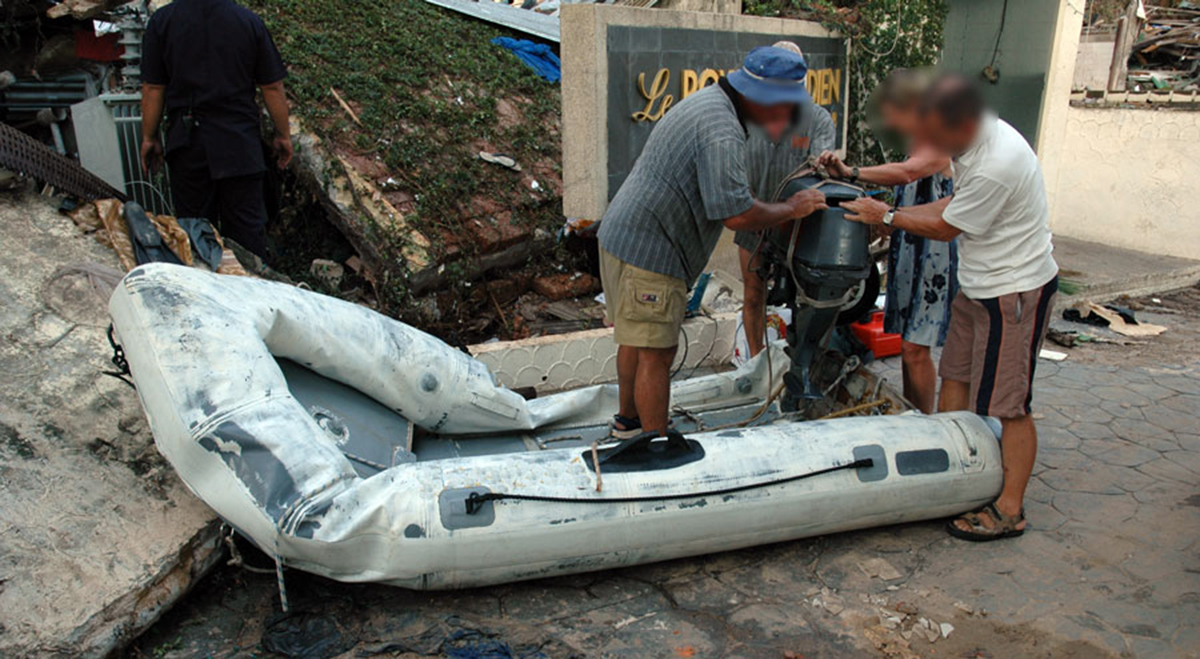
The tsunami picked up and deposited this dinghy on the top of a building. Unfortunately, the outboard was submerged in the process.
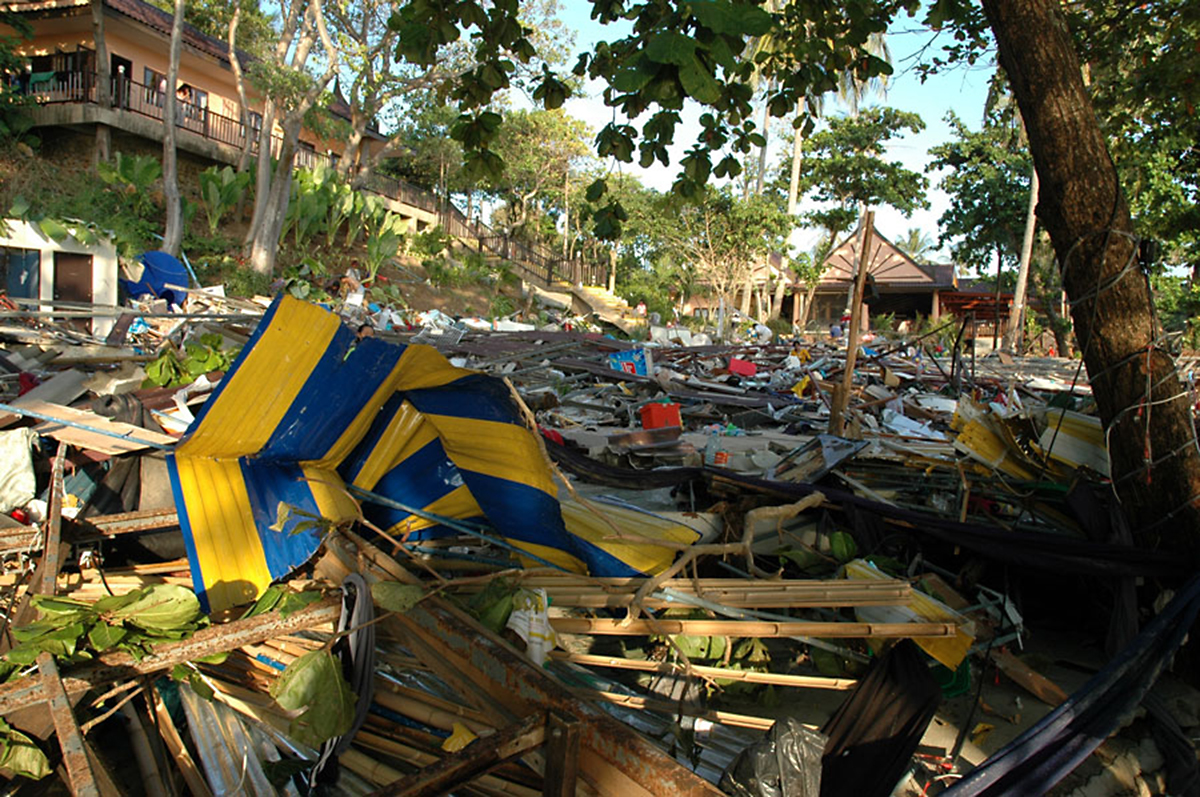
These are the shops on the northern half of the beach. They did not fare well. Anyone inside had a high risk of being killed by the crush of debris.
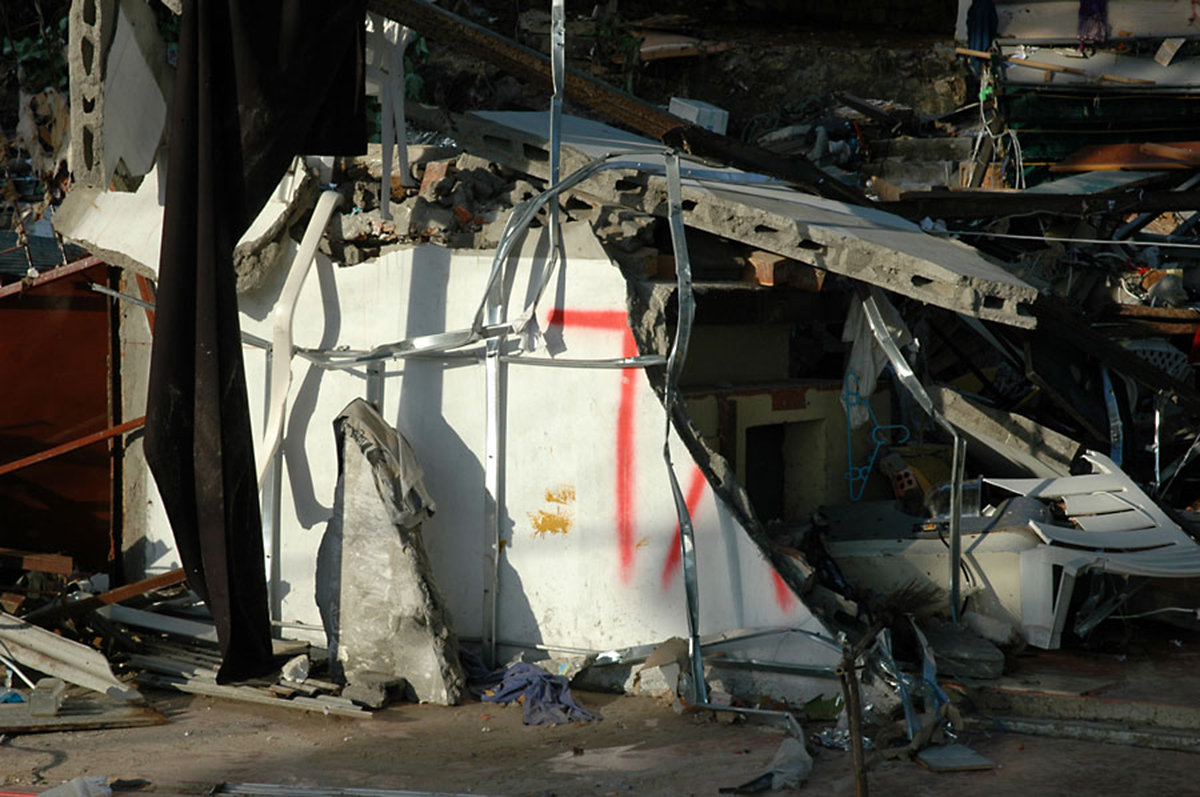
The tsunami struck with enough force to destroy concrete block buildings.
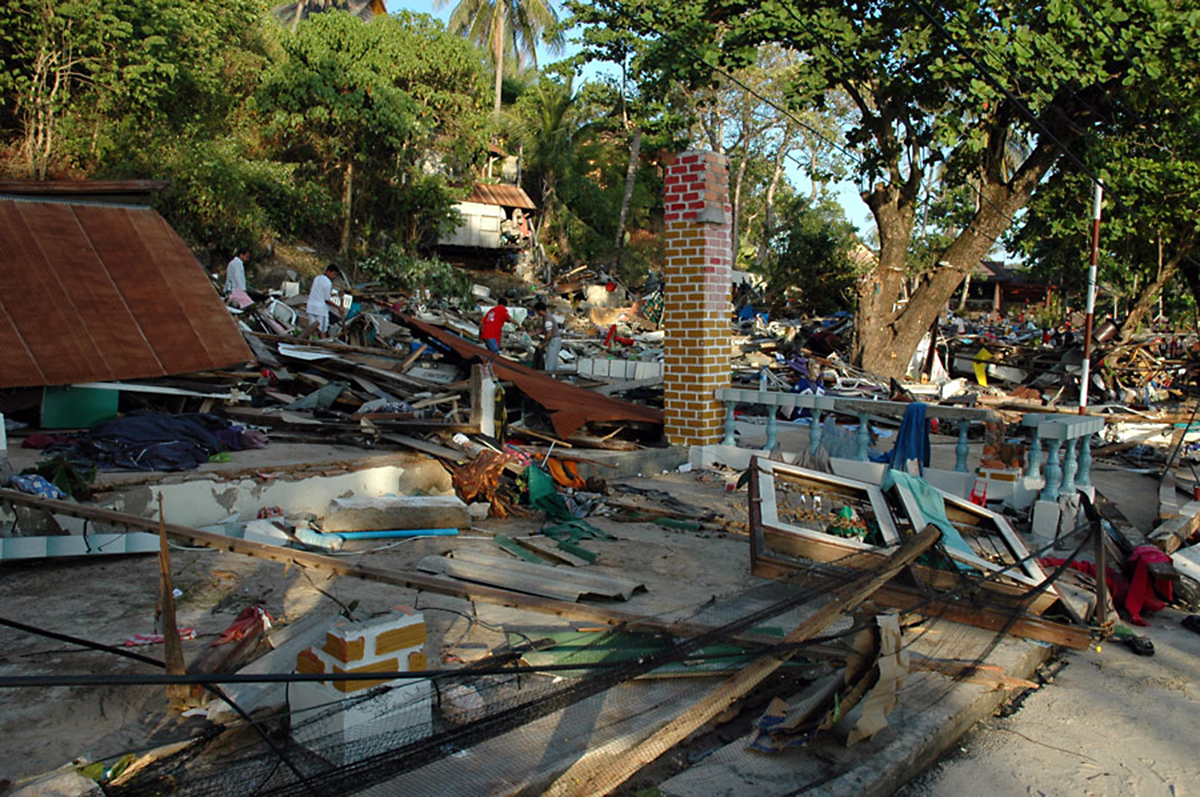
Whole building were washed away leaving only concrete foundations.
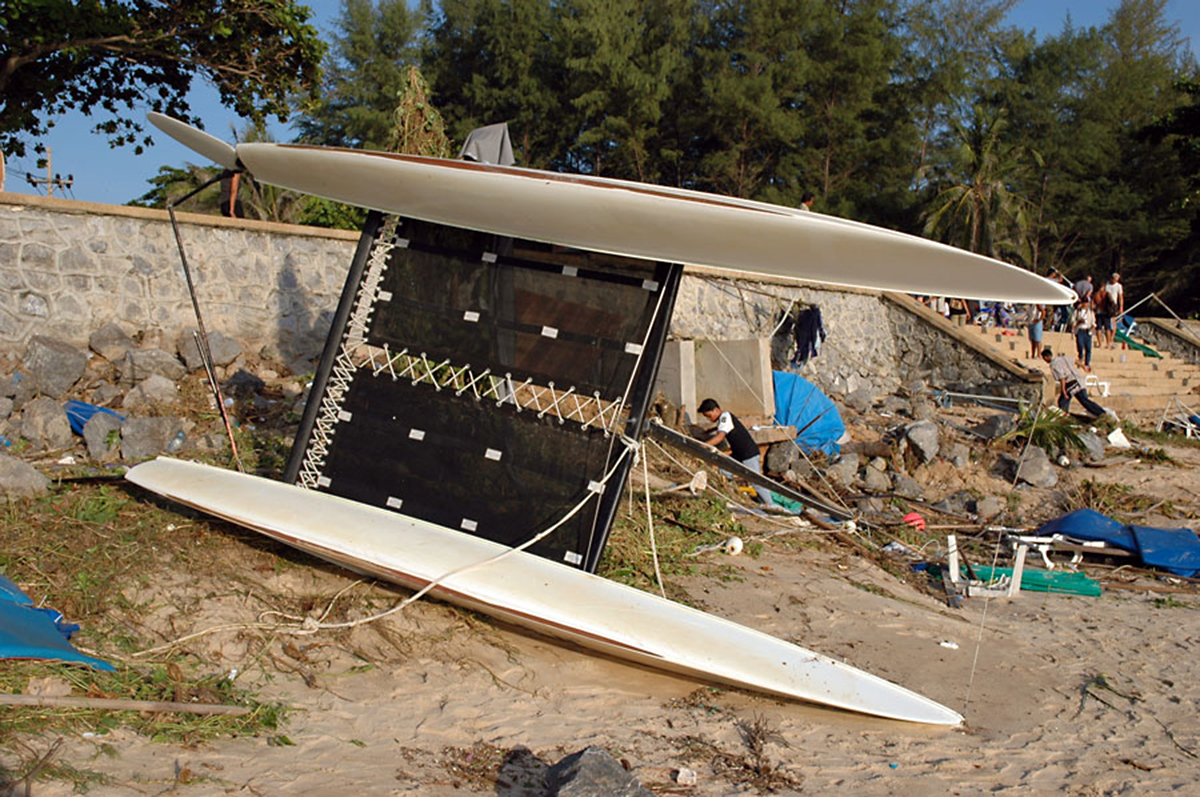
This catamaran survived intact. Yea!!! It tipped over. Booo!

The tsunami had one other treat in store for those of us waiting to sail across the Indian Ocean.
It deposited giant trees that were more than one hundred feet long into the ocean.
We had to carefully pick our way through all the tsunami debris as we sailed from Thailand to the Maldives.
The long arms of the tsunami extended all the way across the Indian Ocean.
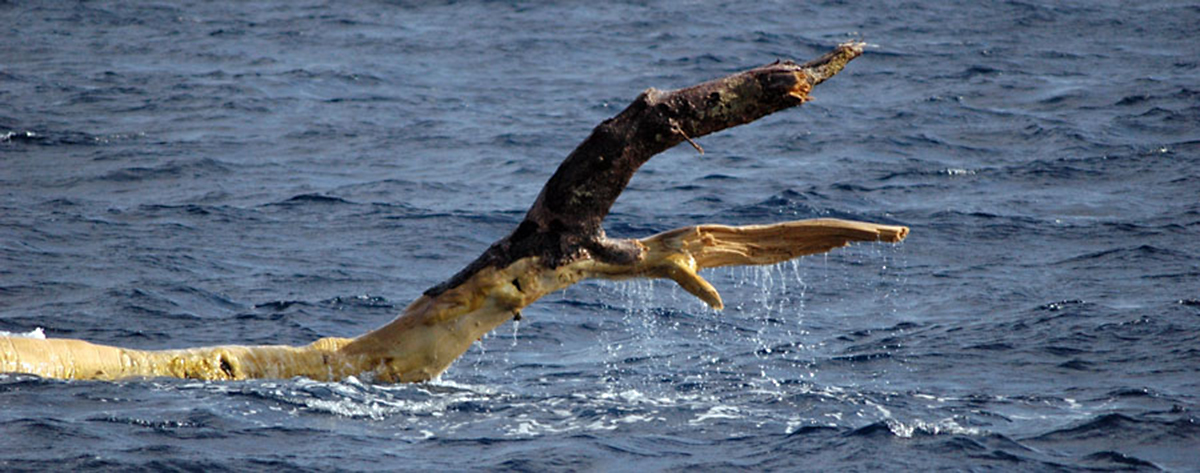
These jaws of doom could easily have dismasted our yacht if the limbs and gotten entangled in our rigging.
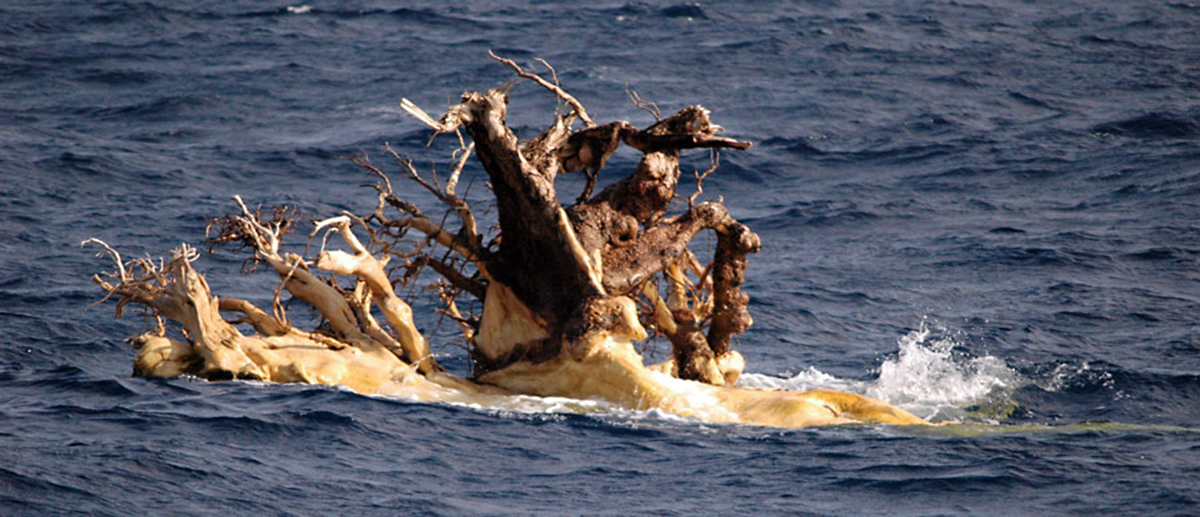
The root system anchoring this tree was at least ten feet in diameter and was a major hazard to navigation. Hit this at night, and it could well be the end of your Indian Ocean Adventure.
There was so much tsunami debris in the Indian Ocean that we lashed oars down the front of our bows to act as shock absorbers in the event that we struck large objects floating in the water. The oar on the port bow did not survive the tsunami debris in one piece. The picture shows the fractured blade of the oar lashed back in position after repairs to the oar were complete.
We were blessed to go through the global tsunami with trivial cosmetic damage to Exit Only while more than 100,000 people lost their lives.
The thread of life is thin and easily broken. That is why we live each day to the fullest and try to make it count for something good.
Awesome music video that captures the essence of what it's like to sail offshore in a catamaran around the world when conditions are less than perfect. David Abbott from Too Many Drummers sings the vocals, and he also edited the footage from our Red Sea adventures. This is the theme song from the Red Sea Chronicles.
Sailing up the Red Sea is not for the faint of heart. From the Bab al Mandeb to the Suez Canal, adventures and adversity are in abundance. If you take things too seriously, you just might get the Red Sea Blues.
If you like drum beats, and you like adventure, then have a listen to the Red Sea Chronicles Trailer.
Flying fish assault Exit Only in the middle of the night as we sail through the Arabian Gulf from the Maldives to Oman. And so begins our Red Sea adventures.
Sailing through Pirate Alley between Yemen and Somalia involves calculated risk. It may not be Russian Roulette, but it is a bit of a worry. Follow Team Maxing Out as they navigate through Pirate Alley.
Stopping in Yemen was just what the doctor ordered. We refueled, repaired our alternator, and we made friends with our gracious Yemeni hosts. We also went to Baskins Robbins as a reward for surviving Pirate Alley.
After you survive Pirate Alley, you must sail through the Gate of Sorrows (Bab Al Mandab) at the southern entrance to the Red Sea. The Gate of Sorrows lived up to its name with fifty knots of wind and a sandstorm that pummeled Exit Only for two days. Life is good.
Although I like the feel of a paper book in my hand, I love trees even more. When people purchase an eBook, they actually save trees and save money as well. Ebooks are less expensive and have no negative impact on the environment. All of Dr. Dave's books are available at Save A Tree Bookstore. Visit the bookstore today and start putting good things into your mind. It's easy to fill your mind with positive things using eBooks. No matter where you are or what you are doing, you can pull out your smart phone or tablet and start reading. You can even use electronic highlighters and make annotations in your eBooks just like paper books.